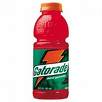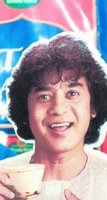Company: Citizen
Agency: Hakuhudo Percept
Brand Count : 106
The brand came to India initially with a collaboration with HMT in the late 1960's. Later the brand re- entered India in 1998 as a joint venture between the Japanese Watch maker Citizen and Doshi Time Industries. In mid 2003 Citizen hiked its stake to more than 95%
 .
.During the initial years Citizen failed to understand the Indian consumer correctly. It misread the price-value perception of the ever value- conscious Indian consumer. The watches during the initial years were in the price range of 1600-2500 and 6000-20,000. The company thought that with the brand name, it could sell the watches at any price. That was a huge mistake and the product bombed in the market. The reason was that the discerned Indian consumer show no value in those watches although they were impressed with the brand name. This created lot of issues for the company. In a panic move, in 2000 the company went for a major price cut and that further eroded the brand equity of Citizen.
The Indian watch market is about 30mn units and in that the branded watch market is estimated to be around 12mn units. Most of the action is happening in the mid price category.
Citizen is now trying hard to regain the lost brand equity. The product that they chose to be the white knight was the " Eco Drive". Eco Drive had the technology of producing its own power from light. Hence it does not need a battery. Citizen effectively used this technology to position the bran d as a high-tech one . Although the " No need for a battery" is not a highly preferred attribute to a consumer, Citizen used this feature to differentiate itself from the rest.
d as a high-tech one . Although the " No need for a battery" is not a highly preferred attribute to a consumer, Citizen used this feature to differentiate itself from the rest.
 d as a high-tech one . Although the " No need for a battery" is not a highly preferred attribute to a consumer, Citizen used this feature to differentiate itself from the rest.
d as a high-tech one . Although the " No need for a battery" is not a highly preferred attribute to a consumer, Citizen used this feature to differentiate itself from the rest. EcoDrive was positioned as the ultimate tech-watch and was smartly premium priced. Although the " No Battery" was the key differentiator, the product was very well styled and the promotion was effective in projecting the premiumness of the brand.
With EcoDrive, Citizen was able to recapture its brand equity to certain extent. Still the pricing of the watch makes it unreachable to the middle class.
With the regaining of the equity, the brand went into an overdrive with a slew of new product launches. In 2005, the brand roped in Kareena to endorse the ladies range of watches. Citizen believes strongly that Celeb Endorsement works wonders for the brand. Hence following the positive response to Kareena endorsement, in 2006 Citizen roped in Rahul Dravid to endorse its men's range of watches.
With the smart advertising and differentiation , Citizen survived a near death in the Indian market. In this new avatar, the brand with a market share of 15% is going great guns. But it is worth noting that Indian consumers still have to stretch a little too much to own a Citizen.
With the International brands scaling up their plans in India, Citizen may again have to relook on their value proposition.








